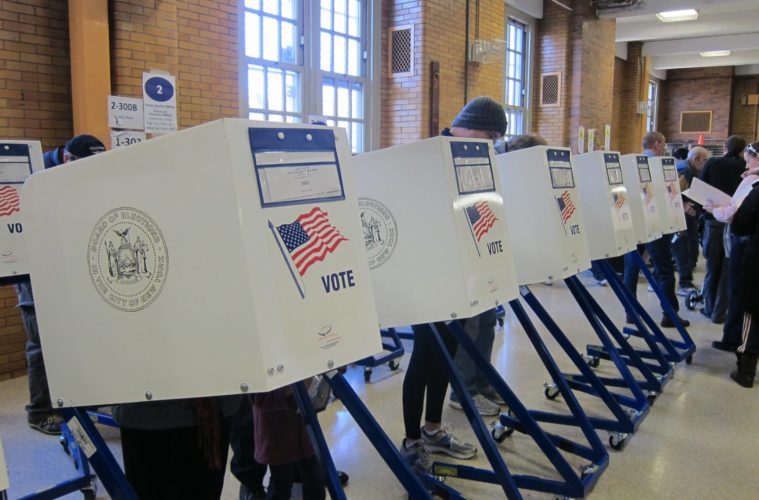On the eve of another huge election for cannabis, the experts at the Tax Foundation talked with L.A. Weekly about their look at the potential value of each new cannabis market to states’ coffers.
Ulrik Boesen is a senior policy analyst with the Center for State Tax Policy at the Tax Foundation. He recently highlighted his continued concerns over states relying on excise tax models for cannabis while taking a look at the potential tax for each state with legal cannabis sales on the ballot.
Boesen argues while there are legitimate reasons for levying excise taxes on marijuana, legislatures and voters should proceed with caution.
“Due to their narrow base, excise taxes are not a sustainable source of revenue for general spending priorities. That is not to say that there is no new revenue available to states that choose to legalize. Beyond the general sales tax, legal marijuana businesses would also pay business taxes, and employees would pay personal income taxes,” Boesen said in his analysis. “Revenue from these broad-based taxes, combined with a potential saving as illicit operations decline, does represent general fund revenue. Expecting a large and sustained boost from marijuana-specific taxes, however, is shortsighted and represents poor tax policy.”
Even for an expert like him, it can actually be tricky to follow all the dollars cannabis is providing to state economies. Boesen said when he looked at these cannabis tax numbers he wasn’t always sure of the exact makeup.
“I looked at Washington state recently and I couldn’t tell if the cannabis number was sales and excise and gross receipts taxes, and you know income taxes from people who work in the dispensaries and property taxes from the dispensaries in corporate income tax. If that was all included there or if it was some of them,” Boesen told L.A. Weekly.
Boesen said Washington state and California are outliers from generally reasonable tax rates in the other states where markets are developing.
“California is very high when you add up all the different jurisdictions’ taxes. They’ll have local taxes on the laboratory, local taxes on the cultivator, local taxes on the processor, local taxes on the realtor, and then their state tax on top. So they can easily jump above a 50 percent effective tax rate,” Boesen said. “Then we’re talking really high taxes, but most of the other states are closer to 20, 25 percent effective tax rates of what the consumer is paying and that doesn’t seem crazy to me.”
Boesen called Washington the best model despite it being just under California when it comes to how high rates are. He believes the reason Washington is able to be successful with that rate is the looser regulations making the market more accessible.
As for the markets that will vote on Election Night 2020, the Tax Foundation released its expectations for how much each state voting would collect in Fiscal 2025 when the markets mature. Arizona’s Prop. 207 is expected to generate $166.3 million, Montana’s I-190 would generate $38.5 million and South Dakota’s amendment would generate $29.3 million. New Jersey hasn’t set a tax rate to go with Question 1 yet, but it would be in addition to the state sales tax that will be applied.
How much is the industry worth in each state? Here are some tax numbers from past years and predictions for new markets.
California
California collected $636 million last year, a big jump from $397 million in 2018.
Colorado
It’s a record year in Colorado. While the $302 million the state made last year was great, through August Colorado had collected $244 million in revenue from taxes and fees.
Washington
Fiscal 2019 saw Washington make $395.5 million in total cannabis revenue.
Oregon
One of the nation’s oldest legal markets, Oregon collected a total $102 million in fiscal 2019.
Michigan
Michigan only started recreational sales last December. There are a couple schools of thought on the value of the market to state coffers once the market matures. While the state only brought in around $107,000 in the first week of sales, the state expected to see about $95 million in taxes in 2020 as the market launched. A recent report by Michigan State University and Department of Agriculture dropped in March projecting $495.7 million in revenue. $298.6 million is from excise taxes and the other $197.1 million is sales tax as the market matures.
Nevada
Nevada made $105 Million in fiscal 2020
Illinois
The Illinois Department of Revenue announced in mid-October the state has collected over $100 million in tax revenue from the industry. With the holidays are yet to hit, it’s fair to estimate the market bringing in $120 million by the end of the year.
Alaska
Alaska is another developing market. It’s expected to bring in $27.2 million for the whole year.
Massachusetts
The Bay State saw legal cannabis sales generate $122 million in tax revenue in the first two fiscal years. Sales and excise taxes both more than tripled over that time. But for fiscal 2020 the combined excise, sales and local numbers totaled about $96 million.
Maine
Legal cannabis sales started a few weeks ago. Officials expect the first full year of legal sales to do $23.6 million in sales and excise tax revenue.
The value of all the current legal market tax revenue, the potential of the markets recently open and the potential of the markets being voted on Election Night would put the tax revenue of the industry at well over $2 billion dollars. This doesn’t even take into account money from New York and New Jersey markets that will add up quickly once they’re established.
Advertising disclosure: We may receive compensation for some of the links in our stories. Thank you for supporting LA Weekly and our advertisers.

